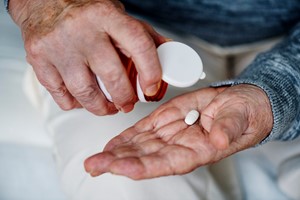Despite the availability of Paxlovid, a potent medication designed to prevent mild-to-moderate COVID-19 infections from escalating into more severe conditions, recent studies have revealed a significant under-prescription of this drug among eligible patients. With its efficacy demonstrated in clinical trials and its FDA approval, understanding Paxlovid's mechanism, eligibility criteria, and importance is crucial in combating the ongoing COVID-19 pandemic.
How Paxlovid Works
Paxlovid, also known as nirmatrelvir-ritonavir, operates by inhibiting the replication of the virus responsible for COVID-19 at the cellular level. Comprising a dose pack, it consists of two active pills containing nirmatrelvir and one "booster" pill containing ritonavir, which aids in maintaining effective drug levels in the bloodstream. The medication is most effective when administered within five days of the onset of symptoms, emphasizing the importance of early intervention.
Eligibility Criteria
This treatment is specifically tailored for high-risk individuals who present with mild or moderate COVID-19 symptoms but aim to mitigate the risk of severe consequences. High-risk groups include individuals over 50, those not fully vaccinated against COVID-19, immunocompromised individuals, pregnant women, and individuals with underlying medical conditions such as diabetes, hypertension, or asthma. A comprehensive list of medical conditions indicating high-risk status is available on the CDC's website.
When to Consider Paxlovid
Patients at high risk for COVID-19 complications should promptly consult their healthcare providers regarding Paxlovid upon experiencing symptoms. Research suggests that early initiation of treatment, preferably within the initial five-day window, yields optimal outcomes, as demonstrated in studies such as the University of Hong Kong's analysis published in Nature Communications.
Accessibility and Affordability
Access to Paxlovid is facilitated through various channels. Medicare or Medicaid beneficiaries can avail the treatment free of charge until the end of 2024 through the U.S. government's Patient Assistance Program. Additionally, individuals with private insurance can enroll in the Paxcess program to alleviate out-of-pocket costs. However, it is imperative to inform healthcare providers about concurrent medications to ensure compatibility and safety.
Maximizing Protection Against COVID-19
While Paxlovid provides a crucial therapeutic option, preventive measures remain paramount in mitigating the spread and impact of COVID-19. Recommendations from the CDC emphasize staying updated on immunizations, practicing proper hygiene such as thorough handwashing and cough etiquette, and optimizing indoor air quality by ventilation or outdoor activities. Furthermore, individuals experiencing respiratory illness symptoms are advised to stay home to prevent transmission to others.
Paxlovid represents a significant advancement in COVID-19 management, offering a proactive approach to mitigating disease progression among high-risk individuals. However, the underutilization of this medication underscores the importance of raising awareness among both healthcare providers and eligible patients. By adhering to eligibility criteria, seeking timely intervention, and incorporating preventive measures, individuals can effectively safeguard themselves and their communities against the ongoing threat of COVID-19.













